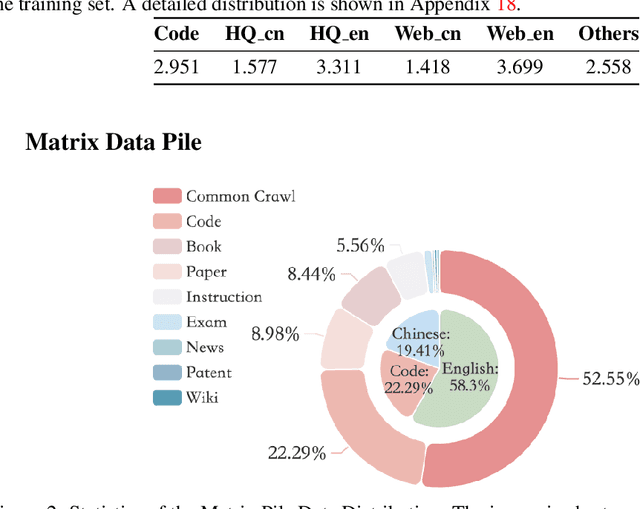Morry Niu
Demystifying Long Chain-of-Thought Reasoning in LLMs
Feb 05, 2025Abstract:Scaling inference compute enhances reasoning in large language models (LLMs), with long chains-of-thought (CoTs) enabling strategies like backtracking and error correction. Reinforcement learning (RL) has emerged as a crucial method for developing these capabilities, yet the conditions under which long CoTs emerge remain unclear, and RL training requires careful design choices. In this study, we systematically investigate the mechanics of long CoT reasoning, identifying the key factors that enable models to generate long CoT trajectories. Through extensive supervised fine-tuning (SFT) and RL experiments, we present four main findings: (1) While SFT is not strictly necessary, it simplifies training and improves efficiency; (2) Reasoning capabilities tend to emerge with increased training compute, but their development is not guaranteed, making reward shaping crucial for stabilizing CoT length growth; (3) Scaling verifiable reward signals is critical for RL. We find that leveraging noisy, web-extracted solutions with filtering mechanisms shows strong potential, particularly for out-of-distribution (OOD) tasks such as STEM reasoning; and (4) Core abilities like error correction are inherently present in base models, but incentivizing these skills effectively for complex tasks via RL demands significant compute, and measuring their emergence requires a nuanced approach. These insights provide practical guidance for optimizing training strategies to enhance long CoT reasoning in LLMs. Our code is available at: https://github.com/eddycmu/demystify-long-cot.
MAP-Neo: Highly Capable and Transparent Bilingual Large Language Model Series
May 29, 2024



Abstract:Large Language Models (LLMs) have made great strides in recent years to achieve unprecedented performance across different tasks. However, due to commercial interest, the most competitive models like GPT, Gemini, and Claude have been gated behind proprietary interfaces without disclosing the training details. Recently, many institutions have open-sourced several strong LLMs like LLaMA-3, comparable to existing closed-source LLMs. However, only the model's weights are provided with most details (e.g., intermediate checkpoints, pre-training corpus, and training code, etc.) being undisclosed. To improve the transparency of LLMs, the research community has formed to open-source truly open LLMs (e.g., Pythia, Amber, OLMo), where more details (e.g., pre-training corpus and training code) are being provided. These models have greatly advanced the scientific study of these large models including their strengths, weaknesses, biases and risks. However, we observe that the existing truly open LLMs on reasoning, knowledge, and coding tasks are still inferior to existing state-of-the-art LLMs with similar model sizes. To this end, we open-source MAP-Neo, a highly capable and transparent bilingual language model with 7B parameters trained from scratch on 4.5T high-quality tokens. Our MAP-Neo is the first fully open-sourced bilingual LLM with comparable performance compared to existing state-of-the-art LLMs. Moreover, we open-source all details to reproduce our MAP-Neo, where the cleaned pre-training corpus, data cleaning pipeline, checkpoints, and well-optimized training/evaluation framework are provided. Finally, we hope our MAP-Neo will enhance and strengthen the open research community and inspire more innovations and creativities to facilitate the further improvements of LLMs.
 Add to Chrome
Add to Chrome Add to Firefox
Add to Firefox Add to Edge
Add to Edge